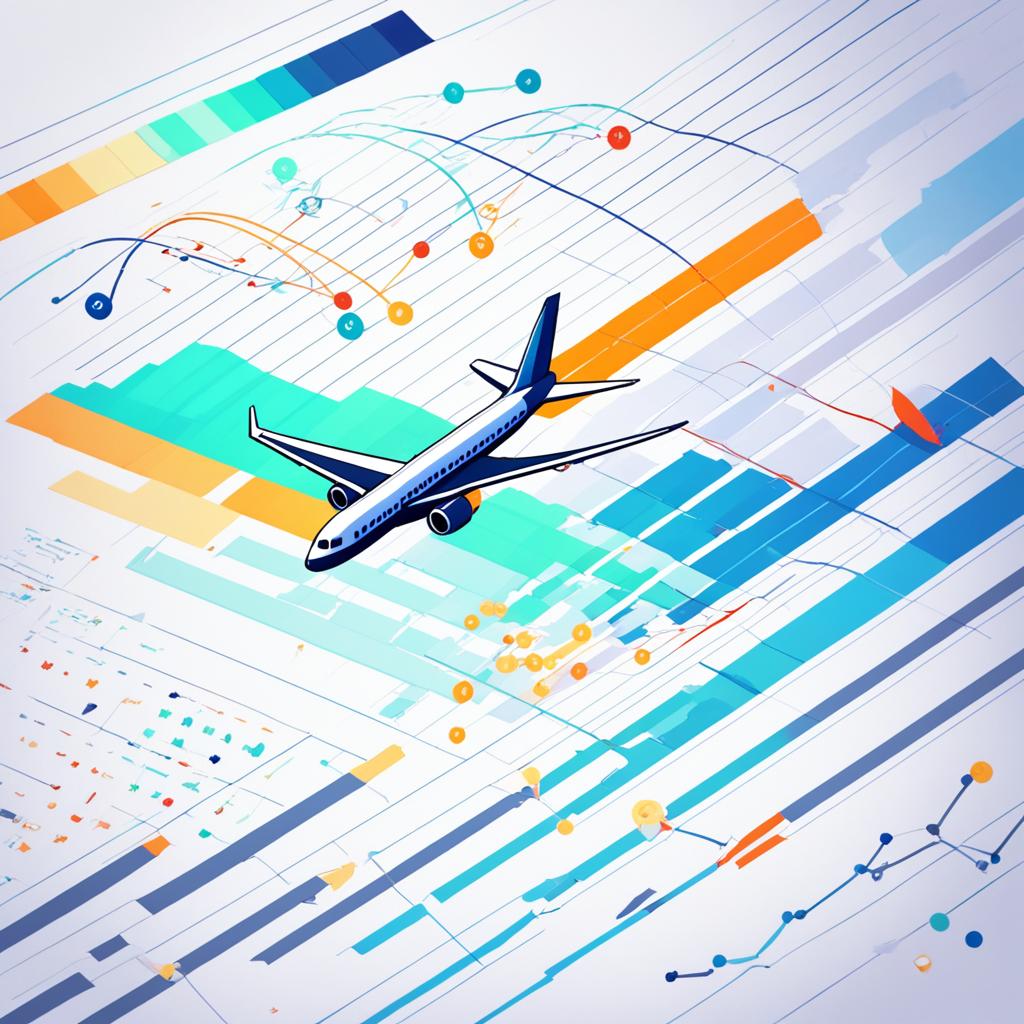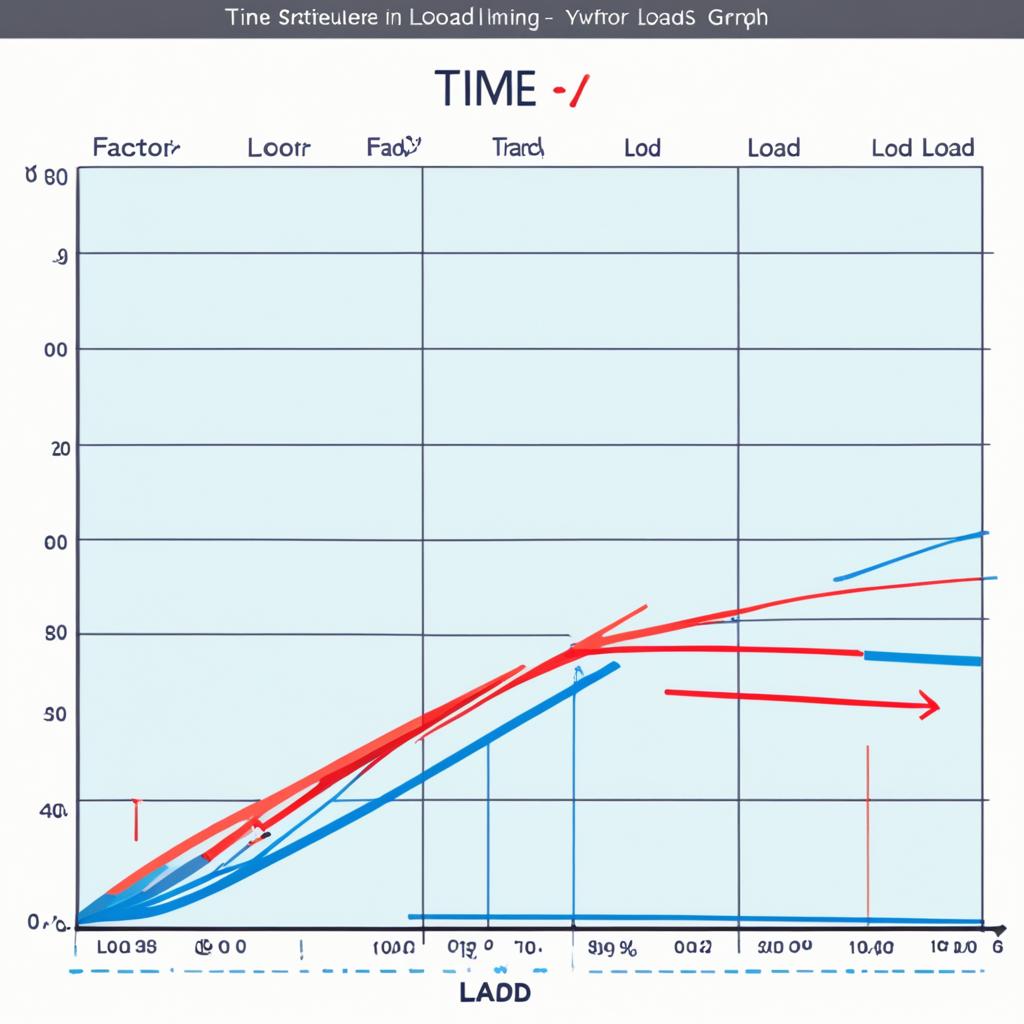When it comes to assessing an airline’s profitability and efficiency, one metric holds significant importance: the good airline load factor. But what exactly is it, and why does it matter in the aviation industry? Is a high load factor always the best indicator of success, or are there other factors at play? Let’s delve into the world of load factors and uncover the truth behind this crucial measure.
Before we embark on this journey, picture yourself in a bustling airport terminal, surrounded by planes preparing for departure. As you observe the aircraft, you may wonder what percentage of their seats are actually occupied by passengers. This is where the load factor comes into play, as it reflects the percentage of available seats that an airline has been able to sell during a specific time frame.
The Importance of Load Factor for Airlines’ Profitability
Airlines aim to maximize their load factor in order to increase revenue and eventually turn a profit. The load factor directly impacts an airline’s ability to cover its costs and generate income. Higher load factors allow airlines to spread their fixed costs across more passengers, increasing their profitability.
In 2020, the domestic and international load factors for US airlines remained above 80%, highlighting the importance of high load factors for profitability.
When airlines achieve high load factors, they can efficiently utilize their available seating capacity, ensuring that a significant portion of their seats are occupied on each flight. This allows them to generate more revenue from ticket sales, contributing to their overall profitability.
Additionally, high load factors enable airlines to minimize losses and improve their financial performance. By filling a larger proportion of their seats, airlines can better cover their fixed costs, such as aircraft maintenance, fuel, and crew salaries, with the revenue generated from ticket sales. This cost distribution across more passengers helps increase the profitability of each flight and the airline as a whole.
Image:
Airlines employ various strategies to achieve high load factors, such as implementing effective revenue management techniques, optimizing flight schedules, and adjusting ticket prices based on demand and market conditions. By continuously monitoring and analyzing load factor data, airlines can make informed decisions to maximize profitability and maintain competitiveness in the aviation industry.
Overall, the load factor plays a vital role in driving airlines’ profitability. It is a key metric that indicates how efficiently an airline utilizes its seating capacity, generates revenue, and covers costs. By aiming for high load factors, airlines can enhance their financial performance and ensure long-term sustainability in a highly competitive industry.
Load Factor as a Key Performance Indicator for Airlines

The load factor serves as a key performance indicator for airlines, providing insights into their sales generation, expense coverage, and overall profitability. It helps airlines determine how well they are utilizing their available seating capacity and whether they are attracting enough passengers to fill their planes. A low load factor may indicate that an airline is struggling to generate revenue and cover its expenses.
For airlines, achieving a high load factor is essential for maximizing profitability. A high load factor means that a significant percentage of seats are filled on each flight, allowing the airline to spread its fixed costs across more passengers. This ensures that revenue from ticket sales covers operating expenses and contributes to the overall financial health of the airline.
Monitoring and optimizing the load factor is crucial for airlines’ success. By analyzing load factor data, airlines can identify trends and patterns that enable them to make informed decisions regarding pricing, route planning, and marketing strategies. By continuously monitoring their load factors, airlines can adjust their operations to meet demand, attract more passengers, and improve their financial performance.
Importance of Load Factor Analysis
Load factor analysis provides valuable insights into an airline’s operational efficiency and competitiveness within the aviation industry. By comparing their load factors to industry benchmarks and competitors, airlines can assess their performance and identify areas for improvement. An airline with consistently higher load factors than its competitors may indicate better marketing strategies, an attractive route network, or superior service quality.
Furthermore, analyzing load factor data can help airlines identify patterns during different seasons, holidays, or events. This information enables airlines to anticipate changes in demand and adjust their capacity accordingly. By optimizing route planning and flight schedules, airlines can improve their load factors and maximize revenue potential.
| Airline | Load Factor (%) | Revenue |
|---|---|---|
| Airline A | 84 | $10,000,000 |
| Airline B | 78 | $9,000,000 |
| Airline C | 72 | $7,500,000 |
The table above illustrates the load factor, revenue, and performance of three hypothetical airlines. Airline A with a load factor of 84% generated the highest revenue of $10,000,000, indicating a better utilization of its available capacity. On the other hand, Airline C with a load factor of 72% had lower revenue compared to Airline B despite a similar load factor, suggesting potential room for improvement in generating more revenue per flight.
As the aviation industry becomes increasingly competitive, load factor analysis remains a critical tool for airlines to evaluate their performance, make informed operational decisions, and drive profitability. By focusing on optimizing their load factor, airlines can enhance their efficiency, generate more revenue, and stay competitive in the dynamic aviation market.
Route Planning and Load Factor Optimization

Airlines understand the importance of route planning in achieving optimum load factors and maximizing profitability. Before launching a new route, extensive research is conducted to assess its potential profitability. This involves analyzing factors such as market demand, competition, and passenger preferences. By carefully considering these variables, airlines can make informed decisions about which routes to operate and how to optimize load factors.
Once a new route is established, airlines closely monitor the load factor to evaluate its performance. The load factor provides valuable insights into how well the route is attracting passengers and generating revenue. If the load factor is consistently low, it may be a sign that adjustments are needed to optimize the route’s profitability.
Load factor optimization plays a crucial role in route planning. Airlines strive to achieve load factors that are sustainable and financially viable. By regularly assessing load factor data, airlines can make strategic decisions such as adjusting flight frequencies, reconfiguring aircraft, or offering additional services to attract more passengers. These optimizations help airlines maximize their profitability while ensuring a positive travel experience for their customers.
- Increased revenue: By achieving higher load factors, airlines can fill more seats and generate more revenue per flight. This allows them to cover their operating costs more efficiently and improve their overall financial performance.
- Cost efficiency: Operating flights with higher load factors enables airlines to spread their fixed costs across a larger number of passengers. As a result, the cost per seat decreases, improving cost efficiency and contributing to higher profitability.
- Resource allocation: Load factor optimization helps airlines determine how to allocate their resources effectively. By identifying underperforming routes with low load factors, airlines can reallocate their aircraft and crew to routes that offer greater potential for profitability.
Overall, route planning and load factor optimization are essential strategies for airlines seeking to maximize their profitability. By carefully analyzing market demand, monitoring load factors, and making informed decisions, airlines can optimize their routes to attract more passengers and operate more efficiently.
Load Factor and Recovery After the Coronavirus Pandemic

The load factor is a critical metric for airlines, and it also plays a crucial role in tracking their recovery after the coronavirus pandemic. This metric reflects the willingness of passengers to fly and their preference for certain airlines. By comparing the current load factor to pre-pandemic levels, airlines and industry analysts can gain valuable insights into the progress of airline recovery.
One notable example of load factor growth can be seen with TAP Air Portugal. In the second quarter of 2022, TAP Air Portugal achieved an impressive load factor of 80.4%, indicating a significant 32% increase compared to the same period last year. This encouraging growth suggests a positive trajectory for the airline’s success and recovery.
Tracking load factor trends and growth is essential for airlines looking to rebound and regain passenger confidence. As the load factor increases, it demonstrates that more passengers are comfortable with air travel, leading to increased revenue for airlines.
Comparing Load Factors: Pre-Pandemic vs. Post-Pandemic
Examining load factors before and after the pandemic offers valuable information about the recovery process. The data gathered can help airlines identify trends, make informed decisions, and adjust their strategies accordingly:
| Time Period | Load Factor | Percentage Increase/Decrease |
|---|---|---|
| Pre-Pandemic (2019) | 75% | N/A |
| 2020 | 40% | -47% |
| 2021 | 60% | +50% |
| 2022 (Q2) | 80.4% | +32% |
As the table demonstrates, load factors experienced a steep decline in 2020 due to the impact of the coronavirus pandemic. However, since then, load factors have gradually increased, indicating a positive recovery trend. It is crucial for airlines to closely monitor these load factor changes as they work towards regaining their pre-pandemic levels and ensuring long-term sustainability.
Load Factor and Investor Considerations
When it comes to evaluating the profitability of an airline, investors pay close attention to the load factor. The load factor is a crucial metric that provides insights into an airline’s ability to fill its seats and generate revenue. A high load factor indicates a higher likelihood of an airline being profitable, as it signifies strong passenger demand and efficient capacity utilization.
Investors consider multiple factors when assessing an airline’s financial health and potential return on investment. However, the load factor holds particular significance due to its direct correlation with airline profitability. Understanding an airline’s load factor helps investors gauge the efficiency of its operations and forecast its revenue-generating potential.
By analyzing the load factor, investors can assess an airline’s ability to cover its fixed costs and generate income. A high load factor allows airlines to spread their fixed costs across a larger number of passengers, leading to increased profitability. On the other hand, a low load factor may indicate underutilization of capacity, which can negatively impact an airline’s financial performance.
Investors also consider the load factor in the context of the broader aviation industry. Comparing an airline’s load factor with industry benchmarks allows investors to assess its competitive position and market share. Airlines with consistently high load factors may demonstrate a more stable business model and a stronger market presence.
When making investment decisions, understanding an airline’s load factor provides crucial insights into its operational efficiency and potential for profitability. Investors can use this information to evaluate an airline’s growth prospects, assess its financial stability, and make informed decisions about investing in the aviation industry.
Key Points:
- The load factor is an important metric for investors evaluating airline profitability.
- A high load factor indicates a higher likelihood of a profitable airline.
- Investors consider multiple metrics, including the load factor, to assess an airline’s financial health and potential return on investment.
- Understanding an airline’s load factor helps investors make informed decisions about investing in the aviation industry.
Load Factor and Seat Availability for Non-Rev Travelers
Non-rev travelers, such as airline employees, often rely on seat availability when planning their trips. The load factor directly impacts seat availability on flights, as a higher load factor means fewer empty seats. Non-rev travelers need to understand the load factor to assess their chances of securing a seat on a particular flight. They can use the load factor as a guide to plan their trips and optimize their travel opportunities.
- Non-rev travelers have a unique advantage when it comes to seat availability, as they have access to airline employee travel benefits.
- These benefits allow non-rev travelers to fly on a standby basis, meaning they can take available seats on flights without purchasing a ticket.
- The load factor plays a crucial role in determining whether there are any available seats for non-rev travelers on a particular flight.
- When the load factor is high, it indicates that most seats on the flight are occupied by paying passengers, leaving fewer seats available for non-rev travelers.
- On the other hand, when the load factor is low, it suggests that there are more vacant seats, increasing the chances of non-rev travelers securing a seat.
Non-rev travelers should keep in mind that seat availability is not solely determined by the load factor. Other factors, such as the airline’s travel policies and the number of non-rev travelers on a specific flight, also come into play.
The Benefits of Understanding the Load Factor for Non-Rev Travelers:
- Efficient Trip Planning: By analyzing the load factor, non-rev travelers can strategically choose flights with higher chances of seat availability, ensuring a smoother travel experience.
- Optimized Travel Opportunities: Non-rev travelers can take advantage of low load factors and plan trips during off-peak times, increasing their chances of securing a seat.
- Increased Flexibility: Understanding the load factor allows non-rev travelers to be more flexible with their travel plans, making adjustments when necessary to secure a seat on a flight.
Conclusion
In conclusion, the load factor is a critical metric for airlines’ profitability and efficiency. It indicates how well an airline is utilizing its available seating capacity and generating revenue. A high load factor is desirable for airlines as it allows them to spread their fixed costs across more passengers, increasing their profitability.
Additionally, the load factor serves as a key performance indicator for airlines, providing insights into their sales generation, expense coverage, and overall financial health. It helps airlines make informed decisions about route planning and optimization, ensuring that they are operating on routes with high demand and potential profitability.
Furthermore, non-rev travelers, such as airline employees, also consider the load factor when assessing seat availability for their trips. A higher load factor means fewer empty seats, making it more challenging for non-rev travelers to secure a seat. Therefore, understanding the load factor is crucial for them to plan their trips and optimize their travel opportunities.
Overall, the load factor is a fundamental concept that impacts various aspects of the aviation industry. Airlines, investors, and non-rev travelers all rely on the load factor to evaluate profitability, make informed decisions, and optimize their experiences. Therefore, understanding and monitoring the load factor is essential for all stakeholders in the aviation industry.


